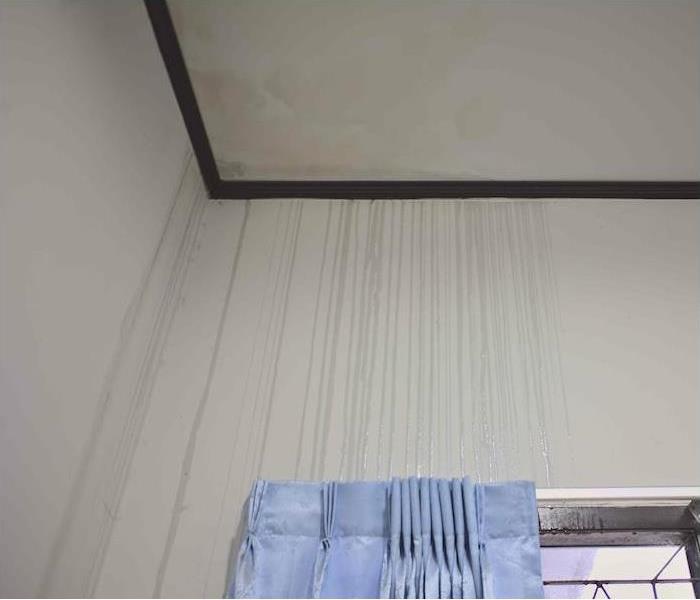Know Where to Look for the Source of a Leak in Your Wappingers Falls Home
12/15/2021 (Permalink)
Water damage can be a huge inconvenience and distraction that no one wants to deal with. We rarely get advanced notice before something damaging occurs. Water is always looking for a place to go, and it always takes the path of least resistance and that can be through many levels or floors of your Dutchess County home.
Knowledge is a great thing. If you can educate yourself about where water can get into your house, some preventive maintenance could go a long way in avoiding damage and costly repairs to your home. Let’s look at a few of the most common sources of home water damage:
Showers. Showers have a number of places that could leak, including fixtures and drains, cracks in a fiberglass tub, and missing grout on tile. Showers are used daily and should be inspected each time they are cleaned. If possible, check the room below it to see if there are water stains or moisture on the ceiling.
Washing machine drain hose. The washing machine drain hose connects to the household drain system in the form of an upside down J-shaped pipe. This pipe should be at least as high as the washing machine itself to prevent siphoning. The pipe should be secured in the drain with a clamp. During the discharge of water from the washing machine, pressure is created in the drain system. The hose, if not secured, could push out of the drain.
Broken or improperly sloped gutters. Gutters are an important component of the roof drainage system. Gutters should be debris-free and sloped toward the downspout to ensure proper emptying of water from the gutter. Broken gutters should be repaired immediately to prevent leaks into the house or foundation damage.
Pipe vent boots. Pipe vent boots secure the venting component of the plumbing system from water infiltration. These boots are engineered to last at least 15 years and should be inspected annually.
Obstruction of outdoor drains. Drain obstructions blocking the path out of the home are common. Whether tress roots have invaded the drain pipe or grease and food particles have solidified to form a clog, the drain line is where all waste water from your home is removed.
Grease solidification. Excessive food can clog disposals, and hair and oil can clog drains and other pipes. Plunging too much or too hard can cause loose fittings to give way, spilling water under your sink. Grease should cool into a solid and then be scrapped off and put in the trash. Never pour excess grease down the drain.
It’s important to keep up with the state of your appliances, pipes and roof, as they all have an expiration date and require periodic maintenance. If you can catch the signs of wear before a leak occurs, you can save yourself a costly headache.
If a water leak turns into a problem at home, you’ve got the best team in the business on your side. Contact SERVPRO of Western Dutchess County today so we can get started. Here to help, locally since 1992.





 24/7 Emergency Service
24/7 Emergency Service
